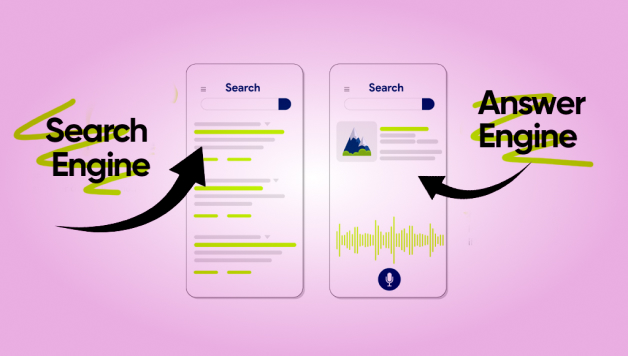Using Competitor Analysis to Strengthen Your Digital Strategy
In the highly competitive world of digital marketing, businesses constantly look for innovative ways to outperform rivals and capture a larger market share. One of the most powerful tools in this quest for excellence is competitor analysis. By closely examining the strategies, strengths, and weaknesses of your competitors, you can gain invaluable insights to help shape and strengthen your digital strategy. Whether you’re a small startup or an established digital marketing company in Chennai, competitor analysis is a critical step toward achieving sustainable growth.
This article delves into how to conduct effective competitor analysis and leverage it to build a more robust digital strategy.
What is Competitor Analysis?
Competitor analysis involves researching and evaluating the strategies, strengths, and weaknesses of other businesses operating in your niche. This process goes beyond merely observing; it includes assessing how competitors position themselves in the market, their product or service offerings, marketing tactics, and customer engagement practices. By studying these areas, you can pinpoint what works and where competitors fall short, helping you to make informed decisions to improve your own strategies.
Why Competitor Analysis is Essential
Competitor analysis is essential because it provides insights that help you:
1. Identify market trends and shifts.
2. Recognize gaps in the market where your business could fill a need.
3. Understand customer preferences and expectations in your industry.
4. Gauge the effectiveness of various digital marketing tactics and channels.
With these insights, a digital marketing company can better understand how to tailor its strategy to meet specific market demands and attract customers more effectively.
Steps to Conduct Competitor Analysis
Let’s walk through the steps for conducting a comprehensive competitor analysis.
1. Identify Your Top Competitors
Start by listing your main competitors. These could be direct competitors—businesses offering similar products or services to your target audience—or indirect competitors—those offering alternatives that fulfill the same need.
You can identify competitors by:
-Conducting a simple Google search with relevant keywords.
-Checking social media platforms for active brands in your industry.
-Using tools like Ahrefs, SEMrush, or SpyFu to analyze who is ranking for your target keywords.
Once you’ve identified competitors, prioritize those with similar audiences, marketing channels, and digital presence to gain insights most relevant to your business.
2. Analyze Their Digital Presence
Look at each competitor’s website and digital footprint. Evaluate factors like website design, usability, mobile optimization, and load times. A well-designed, user-friendly website often translates to higher engagement and conversions.
Consider these key areas when analyzing their digital presence:
-Content: Examine the type, frequency, and quality of content competitors publish. Do they use blogs, videos, or infographics? Note how they engage their audience and optimize content for SEO.
-SEO: Identify their high-ranking keywords, backlink sources, and SEO strategies. Tools like SEMrush or Moz can help you analyze which keywords competitors rank for, allowing you to discover areas where you could improve or differentiate your content.
-Social Media: Review their social media activity. Which platforms are they most active on? What types of content resonate with their audience? Look at their engagement rates, follower growth, and post frequency to gauge their social media effectiveness.
3. Evaluate Their Marketing Strategies
To understand competitors’ digital strategies fully, assess their approaches to paid advertising, email marketing, and content marketing. Analyze their ad copy, targeting tactics, and calls-to-action (CTAs). This will help you identify the tactics they use to attract customers and increase conversions.
You can also subscribe to their newsletters or follow their email campaigns. Note how they segment their audience, personalize messages, and design email templates. By comparing these strategies to your own, you’ll see where improvements could be made or where you can introduce new approaches.
4. Assess Customer Engagement and Satisfaction
Customer engagement and satisfaction are clear indicators of a competitor’s performance. Read through reviews and feedback on platforms like Google, Yelp, or industry-specific review sites. Identify what customers appreciate about their offerings and where they experience pain points.
This information can help your SEO company in Chennai in a few ways:
-Identify gaps: If customers frequently mention an unmet need, you can address it in your own offerings.
-Enhance service quality: Address customer complaints by avoiding similar issues in your business, thus enhancing your service quality.
-Understand preferences: Discovering what customers value most can help shape your messaging, product features, and customer experience strategies.
5. Benchmark and Set Goals
Once you’ve gathered data, compare it with your own performance. This process, known as benchmarking, allows you to understand where you stand in the market and identify areas where improvement is needed.
Based on your findings, set actionable goals for your digital strategy. For instance, if a competitor is seeing success with certain keywords, you could develop content targeting similar search terms or topics. Similarly, if a competitor excels in social media engagement, focus on refining your own social strategy to increase interactions with your audience.
Implementing Insights from Competitor Analysis
Armed with insights from competitor analysis, you can craft a stronger digital strategy that addresses weaknesses, leverages market opportunities, and differentiates your brand. Here are some ways to put these insights into action:
-Content Strategy: Develop content that addresses gaps in competitor offerings, or takes a unique approach to popular topics in your industry. Quality content that resonates with your audience can help boost engagement, brand trust, and SEO rankings.
-SEO and Keyword Targeting: Target keywords that competitors rank well for but approach them with new angles or improved content. This can help you attract traffic from competitors.
-Unique Value Proposition (UVP): Use the weaknesses in competitors’ offerings to refine your UVP. Make it clear why customers should choose you over others and emphasize this in your marketing materials.
Competitor analysis is more than just a tactic; it’s a strategic advantage that allows you to adapt and excel in a crowded market. By studying competitors and learning from their successes and failures, your Branding companies in Chennai can develop a data-driven, customer-focused digital strategy. This proactive approach enables you to stay ahead of market trends, meet customer needs more effectively, and ultimately build a stronger, more resilient brand.
In the ever-evolving digital landscape, competitor analysis should be an ongoing process. By consistently refining your approach based on competitor insights, you can keep your digital strategy relevant, targeted, and primed for success.














Post Comment